When it comes to fire protection, you can’t believe everything you see on the silver screen
It’s the kind of Hollywood moment that delivers that dramatic “wow” factor: in Veronica Mars, Kristen Bell ends a bar fight by holding her lighter under a single fire sprinkler head, triggering all the sprinklers in the bar. In Casino Royale, a villain busts into a box labeled “emergency sprinkler override” as James Bond pursues him, immersing Miami International Airport in chaos and a torrential flood:
And we’ll admit it’s funny when Michael Scott of The Office proposes to his girlfriend in a room full of candles, activating every fire sprinkler in the building. Or when Mel Gibson pops open an umbrella and gleefully pulls a fire alarm to set off the fire sprinklers throughout a Chinese restaurant in Lethal Weapon 4:
While movies and television shows aren’t solely responsible for fire protection myths, Hollywood is spreading harmful inaccuracies about the way fire sprinkler systems operate. Unfortunately, these misconceptions may convince many people to think twice about these critical life safety devices, believing they’re unreliable or a single cigarette lighter can cause massive property damage by soaking an entire building.
In this blog, we aim to shatter this misconception and some of the other biggest myths about fire protection systems. The fact is, sprinklers are safe, reliable, and have gotten incredibly good at protecting people and property from fire.
In the market for fire protection? Feel free to browse our selection of sprinkler system components and accessories, including commercial and residential sprinkler heads, installation tools, Shutguns that quickly shut down triggered sprinkler heads, heavy-duty head guards that protect sprinklers from accidental damage or vandalism, and more.
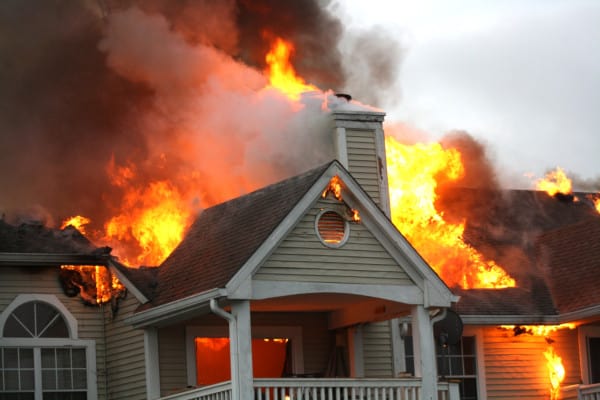
The risk of fire and automatic sprinklers’ amazing track record of safety
Fire looms large as one of the leading causes of preventable accidental deaths in the U.S. In 2017, American fire departments responded to more than 1.3 million fires that caused 3,400 civilian deaths and $23 billion in property damage, the National Fire Protection Association (NFPA) reports.
To put it another way, that means there was a civilian fire death every 2 hours and 34 minutes in the U.S. that year. The U.S. Fire Administration states that cooking is the leading cause of both residential and non-residential fires, but many other factors can trigger a deadly blaze, including electrical malfunctions, smoking, arson, and carelessness.
Automatic fire sprinkler systems have compiled an enviable record of fire protection for more than 100 years, effectively controlling a whopping 96 percent of the flames that trigger them. Your risk of dying in a home fire increases by 85 percent if fire sprinklers aren’t installed. Property damage in hotel fires alone is 78 percent less when sprinklers are present, with average losses coming in at $2,300 in sprinklered buildings vs. $10,300 in unsprinklered structures.
Fire sprinklers are a proven first line of defense, responding quickly and effectively to stop blazes from spiraling out of control.
The American Fire Sprinkler Association’s (AFSA) Public Education and Awareness Committee fires off a letter to Hollywood studios and television broadcasting companies that they believe distort fire sprinklers in their films or TV shows, explaining what was done incorrectly and asking them to be more diligent in the future. The letters emphasize why these inaccuracies can have serious results, making it difficult to recommend this simple, life-saving technology to the general public.
Even so, debunking myths is an ongoing battle in the fire protection industry. Here’s a look at some of the biggest misperceptions about fire sprinklers—and why they are 100 percent untrue.
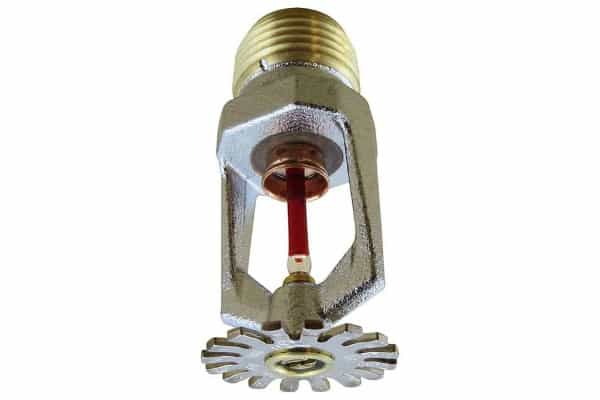
Myth #1: When a fire breaks out, every sprinkler head goes off and ruins everything in the building
Let’s tackle this one immediately. While Hollywood loves to show dramatic floods after an entire fire sprinkler system is triggered by the tiniest blaze, the vast majority of fire sprinklers don’t operate simultaneously.
In reality, each sprinkler must be individually activated by heat from a fire. While we’re at it, let’s clear up another myth: despite popular belief, smoke, cooking vapors, or a little steam won’t trigger a fire sprinkler. There’s no reason to worry that you will cause a flood if you install fire sprinklers and burn your toast.
Fire sprinklers’ simple but thoughtful design ensures that only the sprinklers closest to a fire will spray water, leaving the rest of a property dry and secure. NFPA reports that residential fires are almost always controlled by a single sprinkler head. Six or fewer sprinkler heads control 90 percent of all fires, and two or less control 82 percent.
Here’s how fire sprinklers work:
Nearly every sprinkler is kept closed by a fusible metal link or small glass bulb filled with a heat-sensitive liquid. When a blaze ignites and heats the air to a certain temperature—between 135° F and 650° F (57° and 343° C), depending upon the fire sprinkler’s temperature rating—the fusible link melts or the liquid inside the bulb expands until the glass breaks, opening the sprinkler head and enabling water to flow onto the fire.
Read our previous blog to learn more about how fire sprinklers work. You can also watch this video for a quick demonstration of how glass bulb sprinklers are activated:
There’s an exception to this rule: a deluge sprinkler system is designed to react immediately to a fire with large amounts of water like Hollywood portrays. Deluge sprinklers lack thermally-sensitive operating elements so they are permanently open, ready to deliver water as soon as an initiating device like a smoke detector sends a signal to a monitoring panel. But these systems are only installed in highly flammable or hazardous areas like aircraft hangars or power generating stations—not your average home or commercial building.
And one more thing: there is no “emergency sprinkler override” switch that triggers all the fire sprinklers at once across an entire airport. Sorry, 007:
Myth #2: Water damage from a fire sprinkler system will be more extensive (and expensive) than the damage caused by the fire
Fire sprinklers catch flames early, controlling 96 percent of the fires that trigger them, according to NFPA. Not only does this limit heat and smoke damage to a small area of the property, but it buys people valuable time to exit the building safely.
Here’s another fact to consider: quick response fire sprinklers release between 8 and 24 gallons of water per minute—and one is often enough to control a fire. In contrast, double jacket fire hoses deliver between 150 and 250 gallons of water per minute. The math is pretty simple: fire hoses will dump significantly more water onto your property to extinguish a fire and cause significantly more water damage than sprinklers.
And that’s not considering the damage caused by flame and smoke as the fire continues to spread during the precious minutes it takes the fire department to arrive. In the case of large fires or high-hazard buildings, it’s even possible that the officer in command may take the defensive position of letting the fire burn itself out and protecting neighboring structures, instead of jeopardizing the safety of firefighters.
Modern homes burn hotter and faster than ever before, thanks to the widespread use of lighter weight, less expensive synthetic materials in construction and furnishings. Fire testing conducted by UL (formerly Underwriter Laboratories) found that a modern room may be entirely engulfed by flames in less than 4 minutes. In contrast, a room filled with more natural materials like solid wood that were commonly used decades ago took about 30 minutes to reach flashover.
Watch this video to see the UL test and understand how quickly a modern room can burn:
Myth #3: There’s a big risk that fire sprinklers will leak or activate accidentally
The odds of a manufacturing defect leading to an accidental sprinkler discharge are astronomically low: 1 in 16 million, to be exact. To put that in perspective, you run a greater risk of being randomly hit by a piece of an airplane falling out of the sky.
And while other factors from freezing to corrosion can also cause leaks or accidental fire sprinkler discharges, they are no more likely to occur than leaks from a building’s plumbing system. To ensure reliable performance, NFPA 13: Standard for the Installation of Sprinkler Systems strictly regulates commercial sprinkler system components, design, and installation. Proper selection and location of sprinkler heads—as well as optimal system design—go a long way toward avoiding potential problems.
NFPA 25: Standard for the Inspection, Testing, and Maintenance of Water-Based Fire Protection Systems also mandates regular and extensive inspection, testing, and maintenance of system parts to catch potential problems before they lead to costly water damage or worse, sprinkler malfunctions during a fire.
There are simple steps commercial property owners can take to further reduce the risk of sprinkler leaks or accidental discharges. For instance, installing dry sprinkler systems in areas prone to freezing avoids the risk of burst or leaky pipes when temperatures drop. Adding a listed anti-freeze solution, using electric heat tracing, or increasing insulation can also help avoid damage in wet system pipes.
Replacing pressurized air with nitrogen has been a game-changer for fighting corrosion in dry sprinkler systems, which suffer the highest risk of damage. Heavy-duty head guards protect sprinklers from impacts that could knock off heads and trigger a flood in risky environments such as gymnasiums, warehouses, or construction sites. And if sprinklers are inadvertently triggered, the $50 Shutgun tool can help minimize damage by quickly stopping water flow and restoring the sprinkler’s ability to fight fires.
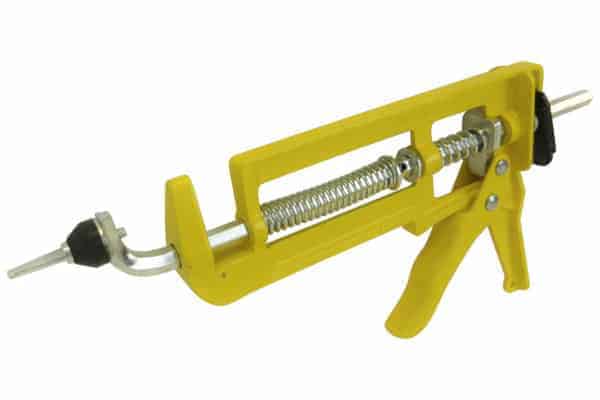
Want to learn more ways to avoid commercial sprinkler leaks and accidental discharges? Check out our blog: “Fire Sprinkler Accidents: The Top 5 Causes of Discharges and Leaks.”
And home fire sprinklers are just as reliable while being requiring much less maintenance. (We get into that below.)
Myth #4: A smoke detector provides enough protection
There’s no denying that smoke detectors save lives by sounding an early warning to a smoke or fire event. But while they alert people to the presence of danger, they do nothing to slow or extinguish a growing blaze or protect those who can’t escape on their own, such as small children or the elderly.
Battery-operated smoke alarms are also less reliable than fire sprinklers—too often, they fail to function because the batteries are dead or have been removed by property owners frustrated with “nuisance” alarms. It’s also pretty easy for homeowners to get distracted by other things and forget to replace the dying batteries they blearily pulled out of a chirping smoke alarm in the middle of the night.
Working smoke alarms cut the chances of dying in a fire in half although recently, fire officials have worried that their ability to reduce death and injury is beginning to level out. And like we previously pointed out, your risk of dying increases by 85 percent in properties where fire sprinklers aren’t present.
Fire sprinklers have been a mainstay of commercial buildings since the 1960s and commercial-residential structures like hotels and condos since the 1990s. But they are rarely found in new single-family homes or duplexes, despite the fact that home fire death rates drop by 90 percent when hardwired smoke alarms AND fire sprinklers are present.
While we’re on the subject of smoke detectors, let’s dispel another myth: smoke alarms won’t activate most fire sprinkler systems. Remember, every individual sprinkler is designed and calibrated to react to the heat of a fire.
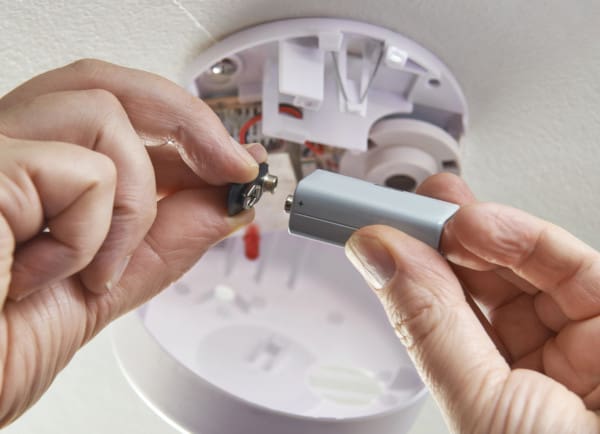
Myth #5: Residential fire sprinklers are too expensive and will make housing unaffordable
Home sprinkler requirements are now recommended by all major “model” fire codes. But housing industry groups remain adamantly opposed: insisting that installing them would increase the price tag of homes enough to put thousands of potential buyers out of the market. The U.S. home-building industry has invested millions into blocking efforts to require fire sprinklers in new homes—with largely successful results.
In some instances, homebuyers have even jumped into the fight, successfully lobbying their representatives to repeal what they view as cost-prohibitive home fire sprinkler requirements.
Here’s the reality: while opponents often cite home fire sprinkler installation costs as high as $5 a square foot, in 2013 the Fire Protection Research Foundation reported costs of about $1.35 a square foot, down from $1.61 a square foot in 2008. To put that into perspective, many people dole out similar amounts for carpet upgrades or paved driveways in new construction.
Supporters of home sprinklers argue that market conditions influence home prices more than building and material costs. They also note that sprinkler requirements in California and Maryland haven’t hurt the housing market. In fact, the economy of scale in California has made fire sprinklers cheaper, with some areas of the state reporting installation cost of less than $1 per square foot. Installing home fire sprinklers can also lead to insurance discounts of up to 10 percent and premium credits of up to 13 percent for full protection.
NFPA officials have long maintained that, after life safety, cost is the main factor they consider when writing home sprinkler regulations, taking careful steps to avoid requirements that would make costs unaffordable for buyers. In sharp contrast, NFPA officials have said installation costs are not a major influence on commercial sprinkler regulations.
NFPA’s maintenance standards for residential systems are also much easier than those found in commercial systems, removing the complexity that might prevent homeowners from choosing to install sprinklers.
Watch this video to hear Matt Klaus, the NFPA’s principal fire protection engineer, discuss how expense is prioritized in the organization’s standard for home sprinklers—NFPA 13D—vs. the NFPA 13 standard that applies to commercial systems:
Don’t let sprinkler myths prevent you from preventing fires
Few things happen in real life the same way they occur in the movies, and fire protection is no different. Shattering myths about fire protection equipment—and sharpening public awareness about the importance of fire sprinklers—is key to ensuring that property owners aren’t apprehensive about installing these lifesaving devices.
Hollywood makes many mistakes about fire protection systems, but let’s end with something it did (slightly) right. In Eraser, Arnold Schwarzenegger shoots out a single fire sprinkler and once again incorrectly causes them all to operate. But the activated sprinklers do open the bulletproof sliding glass doors that Arnold was trapped behind.
This is actually possible since NFPA 101: Life Safety Code requires that doors automatically unlock upon the operation of fire protection components in an integrated building system.
If Hollywood can get that little-known detail right, maybe there’s hope that next time a bad guy holds a flame up to a sprinkler head, he’s the only one that gets soaked.
Feel free to browse our selection of sprinkler system components and accessories, including commercial and residential sprinkler heads, installation tools, Shutguns that quickly shut down triggered sprinkler heads, heavy-duty head guards that protect sprinklers from accidental damage or vandalism, commercial and residential sprinkler risers, gauges, and more, so much more.
Questions about QRFS products or need a brand or item that’s not in our online inventory? Just call us at +1 (888) 361-6662 or email support@qrfs.com.
This blog was originally posted at blog.qrfs.com. Check us out at Facebook.com/QuickResponseFireSupply or on Twitter @QuickResponseFS.


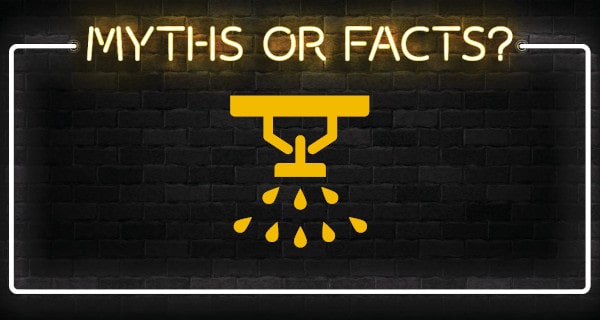

I live in Canada, in a 140 suite 4 storey apartment building, built in 1993, using about 2000 of the 8.5 million Central Sprinkler Heads which were later recalled, in about 1999, by threat of a class action suit in the USA. Canada did not attach itself to this class action. From what I can determine, Central, realizing they would lose the class action suit, agreed to remove and replace the heads (in the USA only), and actually offered to supply our building with acceptable replacement heads. Council at the time accepted the heads but chose to NOT install them, instead storing them in a basement room where they remain. They justified this by claiming that Central was not REQUIRED to replace the heads in the USA, so probably the heads didn’t really need replacing!
I am curious if this is common in Canada, and if our insurance might void our insurability were they to learn of this.